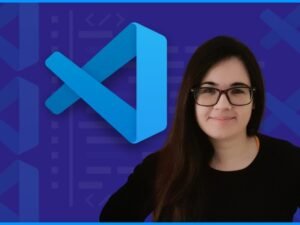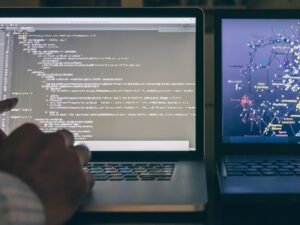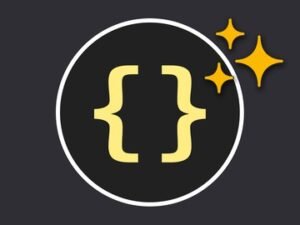Learning Path: Python: Guide to Become a Python Professional
- Description
- Curriculum
- FAQ
- Reviews

Python Professional Learning Path:
If you are looking for a complete course on Python programming, then go for this Learning Path. Python is the preferred choice of developers, engineers, data scientists, and hobbyists everywhere. It is a great scripting language that can power your applications and provide speed, safety, and scalability.
We will begin this learning journey by understanding the basic concepts of Python such as statements and syntax along with using numbers, strings, and tuples. We will then explore various function definition techniques along with learning the basics of classes and objects.
Going ahead, we will understand the intermediate concepts such as functional and reactive programming in Python. We will also explore statistical programming and regression.
Next, you will uncover the advanced topics in Python, will learn to implement real-world test cases to your programs along with integrating different applications.
By the end of this Video Learning Path, you will become proficient in Python.
Python Professional Learning Path (About the Authors)
Steven F. Lott has been programming since the 70s, when computers were large, expensive, and rare. As a contract software developer and architect, he has worked on hundreds of projects, from very small to very large. He’s been using Python to solve business problems for over 10 years. He’s currently leveraging Python to implement microservices and ETL pipelines. His other titles with Packt Publishing include Python Essentials, Mastering Object-Oriented Python, Functional Python Programming, and Python for Secret Agents. Steven is currently a technomad who lives in various places on the east coast of the U.S.
Daniel Arbuckle gained his PhD in Computer Science from the University of Southern California. He has published numerous papers along with several books and video courses, and he is both a teacher of computer science and a professional programmer.
-
1The Course OverviewThis video provides an overview of the entire course.
-
2Creating Meaningful Names and Using Variables
Choosing the correct name is essential to make our programs more readable and ease the process of designing software and applications. Complex names could lead to confusion. This video will guide you to select the appropriate names while designing an application.
-
3Working with Large and Small Integers
Many programming languages make a distinction between integers, bytes, and long integers. Some languages include distinctions for signed versus unsigned integers. How do we map these concepts to Python? This video will walk you through these concepts in detail.
-
4Choosing between Float, Decimal, and Fraction
Python offers us several ways to work with rational numbers and approximations of irrational numbers. We have three basic choices, which are Float, Decimal, and Fraction. With so many choices, when do we use each of these? This video will let you answer this question.
-
5Choosing between True Division and Floor Division
This video will let you understand which division operator to use while converting numbers from one base to another
-
6Rewriting an Immutable String
How can we rewrite an immutable string? This video will answer this question and show you how to work with strings in Python.
-
7String Parsing with Regular Expressions
The easiest way to decompose a complex string is by generalizing the string into a pattern and then writing a regular expression that describes that pattern.This video will let you know how to do it in a smart way!
-
8Building Complex Strings with “template”.format()
Creating complex strings is, in many ways, the polar opposite of parsing a complex string. Let’s dive into building a complex string.
-
9Building Complex Strings from Lists of Characters
There’s another way of building complex strings, which is, from a list of characters. This video will walk you through the steps that let you build a complex string from a list of characters.
-
10Using the Unicode Characters that aren't on Our Keyboards
Our Computers work a lot with Unicode, and sometimes, we are not aware how to use them. This video will let you know how to use Unicode and the internal operations on them.
-
11Encoding Strings-Creating ASCII and UTF8 BytesHow do we map Unicode characters to bytes for writing to a file or transmitting? This video will show you, how to achieve this goal.
-
12Decoding Bytes, How to Get Proper Characters from Some Bytes
How can we work with files that aren't properly encoded? What do we do with files written in the ASCII encoding? How do we decode the characters from that stream of bytes? This video will answer all these queries.
-
13Using Tuples of ItemsHow can we keep things, which are pairs, such as latitude and longitude, together? Let’s see how to do this!
-
14Writing Python Script and Module Files
You need to write Python script files in order to do anything truly useful. How can we avoid syntax errors and be sure that our code matches what's in common use? This video will provide a resolution for these tasks.
-
15Writing Long Lines of Code
There are many times when we need to write lines of code that are so long that they're very hard to read. How can we break long Python statements into more manageable pieces? Let’s explore this.
-
16Including Descriptions and Documentation
When we have a useful script, we often need to leave notes for ourselves and others, on what it does, how it solves some particular problem, and when it should be used. This video contains a suggested outline so that the documentation will be reasonably complete.
-
17Writing Better RST Markup in docstring
When we have a useful script, we often need to leave notes on what it does, how it works, and when it should be used. Many tools for producing documentation, including Docutils, work with RST markup. What RST features can we use to make our documentation more readable? Let’s dive into it!
-
18Designing Complex if…elif Chains
When designing a complex chain of if and else statements, we might miss some condition that got lost in the tangle of logic. Missing this will mean that our program will fail to work properly. How can we be sure we haven't missed something? This video is an answer to this question.
-
19Designing a While Statement that Terminates Properly
There are a few situations, where we don't have the data until we get an input from the person. Let’s have a look at how we could implement a while statement in these conditions.
-
20Avoiding a Potential Problem with Break Statements
What could you do when you have multiple break statements, each with its own condition. How can you minimize the problems created by having complex break conditions? Let’s get the answer for these questions.
-
21Leveraging the Exception Matching RulesHow could we avoid confusion due to hierarchy if we're trying to handle detailed exceptions as well as generic exceptions? This video will give a few of the best exception matching rules.
-
22Avoiding a Potential Problem With an Except:Clause
There are some common mistakes in exception handling. These can cause programs to become unresponsive. This video will show some common exception handling errors that we can avoid.
-
23Chaining Exceptions with the Raise from StatementIn some cases, we may want to merge some seemingly unrelated exceptions into a single generic exception. What if we need to provide supporting details that amplify or extend the generic exception. We can do this by chaining from the generic exception to the root cause exception. Let’s see how to do this.
-
24Managing a Context Using the With Statement
There are many instances where our scripts will be entangled with external resources. We'd like to isolate each entanglement so that we can be sure that the resource is acquired and released properly. Let’s see how we could achieve this goal.
-
25Designing Functions with Optional ParametersWhen we define a function, we often have a need for optional parameters. This allows us to write functions that are more flexible, and can be used in more situations. Let’s see how to design these functions.
-
26Using Super Flexible Keyword ParameterIn some cases, we want to provide a simple, high-performance software implementation that can perform different calculations based on what's known and what's unknown. We don't want to use a general algebraic framework; we want to bundle the different solutions into a simple, efficient function. This video will demonstrate how you could do this.
-
27Forcing Keyword-only Argument with the * Separator
What if you have a large number of positional parameters to a function? What would you do when it gets difficult to remember the required order for the parameters and there are too many parameters? Let’s answer these questions.
-
28Writing Explicit Types on Function Parameters
Sometimes we want hints about the type of data involved, which can be used for testing and confirmation but don't interfere with performance. How can we provide meaningful type hints? Let’s see how we could achieve this goal.
-
29Picking an Order for Parameters Based on Partial FunctionsWhat could be done if we’d like to provide a way to make the common parameters slightly easier to work with than the uncommon parameters and to avoid having to repeat the parameters that are part of a larger context? Let’s have a resolution to this situation.
-
30Writing Clear Documentation Strings
How can we clearly document what a function does? Can we provide examples? Let’s explore the answers to these questions.
-
31Designing Recursive Functions Around Python’s Stack Limit
Let’s see how we could use a simple and smart way to design recursive functions to enhance the structure of our program.
-
32Writing Reusable Script with the Script Library Switch
How can we import the functions or classes from a file without having the script start doing something? Let’s see how to do this.
-
33Choosing a Data Structure
How do we choose which structure to use? What are the features of lists, sets, and dictionaries? Why do we have tuples and frozen sets? Let’s answer these questions with this video.
-
34Building Lists – Literals, Appending, and Comprehensions
Can we control the formatting in our programs? Can we change the extra characters that are supplied? Let’s see how to do this.
-
35Slicing And Dicing a ListThere are many times when we want to pick items from a list. One of the most common kinds of processing is to treat the first item of a list as a special case. This leads to a kind of head-tail processing where we treat the head of a list differently from the items in the tail of a list. Let’s see how we can slice or dice a list.
-
36Deleting From a List
There are many times when we want to remove items from a list collection. We might delete items from a list, and then process the items that are left over. Let’s see how to do this.
-
37Reversing a Copy of a List
We generally want to display the values with the most significant digit first. This leads to a need of reversing the sequence of digits in a list. This video will let you do this in Python.
-
38Using Set Methods and Operators
Can we control the formatting in our programs? Can we change the extra characters that are supplied? Let’s see how to do this. -
39Removing Items from a SetPython gives us several ways to remove items from a set collection. Let’s dive into few of these.
-
40Creating Dictionaries
Through this video, you will be able to use a dictionary when you have some key that we need to map to a given value along with some key operations like inserting and updating dictionaries.
-
41Removing from DictionariesThis video will show you how to define a service that works in a simulated environment with a single processing thread and avoid concurrency and multi-processing considerations.
-
42Controlling the Order of the Dict KeysWhat if we want to keep the keys in a given order so that the dictionary follows the structure of the source file? Let’s see how we could do this.
-
43Handling Dictionaries and Sets in doctest Examples
How can we be sure our doctest examples really work? Let’s get the answer to this.
-
44Understanding Variables, References, and Assignment
How do variables really work? What happens when we assign a mutable object to two variables? Let’s have the answer to these questions.
-
45Making Shallow and Deep Copies of ObjectsThis video will walk you through different ways to break the connection that exists when two variables are references to the same underlying object
-
46Avoiding Mutable Default Values for Function Parameters
This video will let you have a close look at the consequences of a mutable default value for a function parameter and how to avoid it.
-
47Using Features of the print() FunctionsCan we control the formatting in our programs? Can we change the extra characters that are supplied? Let’s see how to do this.
-
48Using input() and getpass() for User InputThe environment variables are available through the os module. How can we have an application's configuration based on these OS-level settings? Let’s have a close look at this.
-
49Debugging with “Format”.Format_Map(Vars())There are some kinds of formatting options available in Python. What if we want more flexible output? Let’s see some amazing options for this, which are there for you in Python.
-
50Using Argparse to Get Command-line Input
In some cases, we may want to get the user input from the OS command line without a lot of interaction. We'd prefer to parse the command-line argument values and either perform the processing or report an error. How do we parse argument values from the command line? Let’s start doing this with this video.
-
51Using CMD for Creating Command-line ApplicationsThere are several ways of creating interactive applications. Let’s see how we can prompt the user for input and then invoke a specific method of the class we provide.
-
52Using the OS Environment Settings
The environment variables are available through the os module. How can we have an application's configuration based on these OS-level settings? Let’s have a close look at this.












